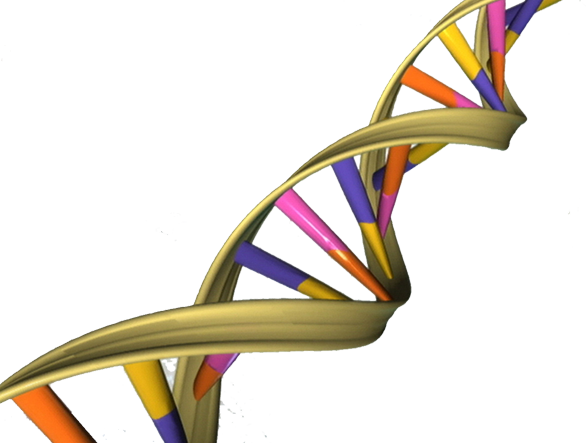Today when I opened up google I was pleasantly surprised to see that their doodle for today (yes, that’s actually what those picture thingies are called, though I’ve spent god only knows how many hours playing the pacman version of their interactive ones) was commemorating the birthday of Rosalind Franklin. While I had heard about DNA all through high school, I don’t think I had ever heard of Rosalind Franklin until doing science at university level.
Understanding the structure of DNA, how the molecules connect together and fold up, has been an important scientific discovery and stepping stone towards learning about genetics and how we inherit DNA from our parents. It was James Watson and Francis Crick (and less famously Maurice Wilkins) who won the Nobel Prize in Physiology or Medicine in 1962 for proposing that there were two chains in the DNA held together by the nucleic acid base pairs in the middle, how they bond together and that it is all in a double helix shape.
How they first started coming up with this theory however is where Rosalind Franklin comes in. Rosalind Franklin had taken X-ray diffraction images of DNA that first implied that the DNA was in a helical structure, in particular and as most people know it, as a double helix. X-ray diffraction involves passing x-rays (non-visible light at a higher energy than visible light) through an object, causing the light to bend and make patterns due to the shape and size of the object. Rosalind Franklin had worked with x-ray diffraction quite a bit and was able to interpret from this picture the helical shape.

Image from wikipedia
Watson and Crick had previously built a proposed model of the DNA structure that had three strands instead of two, and was inside out compared to the final model. However when Rosalind Franklin and Wilkins, her colleague, visited Watson and Crick to see they model, Franklin pointed out many flaws in their model and so they were told by superiors to discontinue their work with DNA.
It was later on when Wilkins showed Watson the x-ray diffraction image by Rosalind Franklin of the DNA without her knowledge that he and Crick were able to develop a model of the proper structure of DNA.
Franklin was beaten to the discovery of the structure of DNA however it can be seen that she did play an important role in Watson and Crick’s development of their model. Unfortunately Rosalind Franklin became ill and passed away from ovarian cancer (aged only 36) in 1958 before Watson, Crick and Wilkins received their Nobel Prize for the work and Nobel Prize cannot be awarded to someone after they have passed away.
X-ray diffraction image from the lightbulb filament from Royal Institution
(Ironically, Rosalind Franklin’s intense work and exposure to x-rays may have been a possible cause for her cancer.)
Missing out on her Nobel Prize and the way Rosalind Franklin was treated by male scientists at the time has caused Franklin to become something of a feminist icon and there have also been multiple books and biographies written about her, telling her side of the story.

Pingback: WHAT IS: Photo 51 | euzicasa